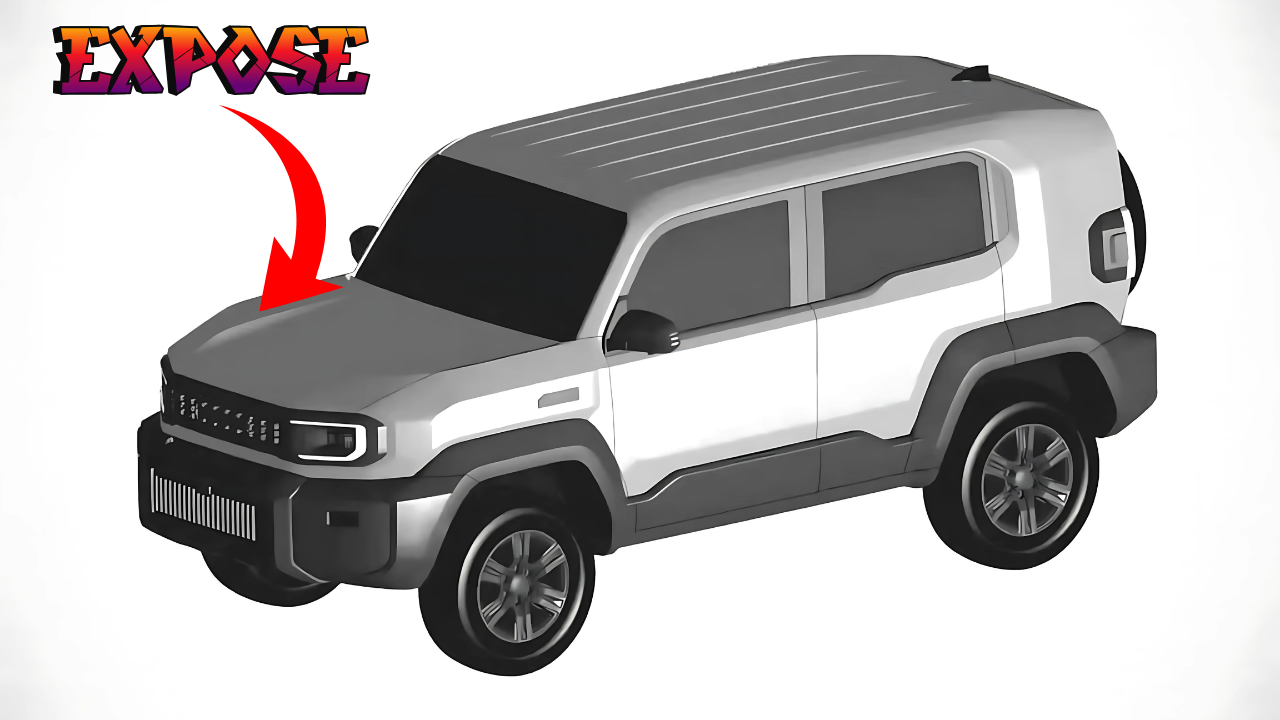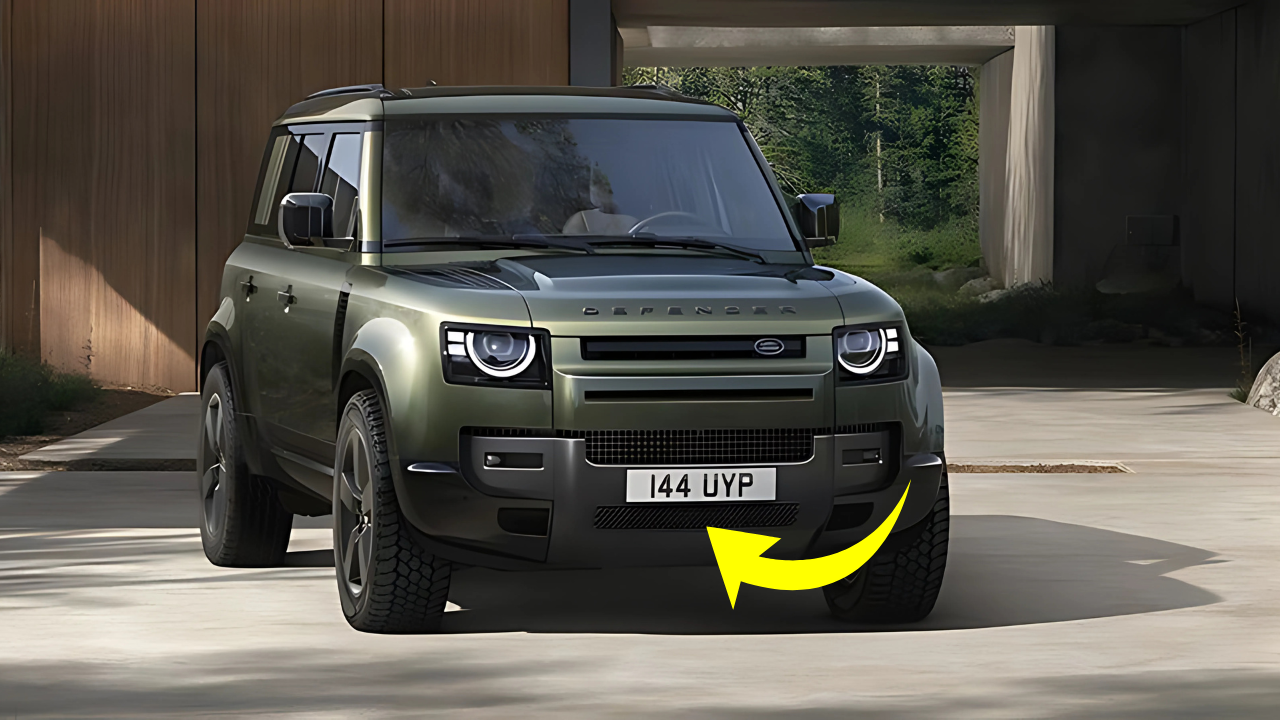The automotive world has been buzzing with excitement since patent images surfaced revealing Toyota’s ambitious plan to enter the compact off-road SUV market. The newly discovered design documents, filed in the Philippines patent office back in January 2024, showcase what appears to be a production-ready version of the long-rumored Toyota Land Cruiser FJ – a pint-sized powerhouse specifically engineered to take on the mighty Suzuki Jimny.
For years, Suzuki’s Jimny has reigned supreme in the affordable, capable off-road segment, selling over 10,000 units annually in Australia alone and establishing itself as the go-to choice for adventure seekers on a budget. However, Toyota’s patent filing suggests the Japanese automotive giant is ready to reclaim territory in this lucrative market with a vehicle that promises to blend the legendary Land Cruiser heritage with compact dimensions and accessible pricing.
Patent Images Reveal Distinctly Rugged Design Philosophy
The leaked patent documents provide our first concrete glimpse of what Toyota has been developing behind closed doors. The design immediately catches attention with its uncompromisingly boxy silhouette, thick D-pillars, and functional aesthetic that prioritizes capability over contemporary styling trends. This isn’t a vehicle trying to win beauty contests – it’s clearly engineered for serious off-road work.
The rear-mounted spare wheel, visible in the patent images, immediately signals Toyota’s intentions. This classic off-road design element, combined with substantial body cladding and an upright windshield, creates a visual connection to both the original FJ series and the modern Land Cruiser family. The five-door configuration suggests Toyota has learned from the Jimny’s limitation in practical daily use, offering enhanced passenger and cargo space without sacrificing the compact footprint that makes these vehicles so appealing.
What’s particularly intriguing about these patent images is their stripped-down appearance. The absence of fog lights, roof racks, and other accessories suggests these represent the base model configuration. This strategic approach could allow Toyota to offer an attractively priced entry point while providing numerous upgrade opportunities for customers seeking enhanced capability or comfort features.
Design Elements Echo Toyota’s Heritage
The design language clearly draws inspiration from Toyota’s Compact Cruiser EV concept, first showcased in 2021, while incorporating practical modifications necessary for mass production. The front end maintains the characteristic Toyota SUV grille treatment, though simplified for manufacturing efficiency and cost control. The proportions suggest a vehicle that’s larger than the current Jimny but significantly smaller than the Land Cruiser Prado, filling a gap in Toyota’s lineup that has existed for years.
The thick D-pillars, while potentially creating blind spots, contribute to the vehicle’s structural integrity – a crucial consideration for a ladder-frame SUV designed to handle serious off-road abuse. The chunky rear bumper cladding isn’t just for show; it’s clearly designed to protect vital components during rock crawling and trail driving adventures.
Technical Foundation: Built for Serious Off-Road Performance
Perhaps the most significant aspect of the Land Cruiser FJ isn’t what’s visible in the patent images, but what lies beneath. Reports consistently indicate that Toyota will build this compact SUV on the IMV-0 platform, the same architecture currently supporting the Hilux Champ pickup truck in Southeast Asian markets. This platform choice represents a fundamental commitment to genuine off-road capability rather than the unibody construction favored by most modern compact SUVs.
The ladder-frame chassis brings several advantages that serious off-road enthusiasts will appreciate. It provides superior torsional rigidity when traversing uneven terrain, offers better protection for vital components, and enables higher towing capacities compared to unibody alternatives. More importantly, it maintains the authentic Land Cruiser character that has made the brand synonymous with unstoppable off-road performance.
Powertrain Options Promise Versatility
While Toyota hasn’t officially confirmed engine specifications, industry reports suggest the Land Cruiser FJ will offer multiple powertrain options to appeal to diverse market segments. The most likely candidates include the proven 2.4-liter and 2.8-liter turbodiesel engines from Toyota’s GD family, both of which have established reputations for reliability and efficiency in challenging conditions.
For markets preferring gasoline power, the 2.7-liter Dual VVT-i unit could provide adequate performance while maintaining reasonable fuel consumption. Perhaps most intriguingly, rumors persist about a hybrid variant utilizing Toyota’s established 2.5-liter petrol-hybrid system, which would position the Land Cruiser FJ as a forward-thinking alternative in an increasingly environmentally conscious market.
The inclusion of proper four-wheel-drive systems with low-range transfer cases appears certain, given Toyota’s commitment to maintaining Land Cruiser authenticity. This means the FJ should offer genuine rock-crawling capability rather than the limited all-wheel-drive systems found in many modern compact SUVs.
Market Positioning: David vs. Goliath in the Compact Off-Road Segment
Suzuki’s Jimny has enjoyed an almost monopolistic position in the affordable, capable off-road market, largely because traditional automakers abandoned this segment in favor of car-based crossovers. The Jimny’s success – selling 4,251 units in Australia through 2023 – demonstrates significant untapped demand for authentic, compact off-road vehicles.
Toyota’s entry into this market represents more than simple competition; it’s a validation of the segment’s viability and growth potential. The Land Cruiser FJ’s larger dimensions compared to the Jimny could address one of the Suzuki’s primary limitations: interior space and daily usability. Families who love the Jimny’s capability but need more room for passengers and cargo will likely find the Toyota offering appealing.
Competitive Advantages and Challenges
The Land Cruiser FJ enters the market with several potential advantages over the established Jimny. Toyota’s global service network provides peace of mind for buyers concerned about long-term ownership, while the brand’s reputation for reliability could sway customers hesitant about the Jimny’s more basic engineering approach.
However, Toyota faces significant challenges in this segment. The Jimny has established a devoted following based on its quirky character, affordable pricing, and proven capability. Toyota will need to match or exceed the Jimny’s approximately $30,000 price point while offering sufficient additional value to justify any premium.
The Land Cruiser FJ’s success will largely depend on Toyota’s ability to balance capability, practicality, and affordability. If priced too high, it risks positioning itself against larger, more established SUVs in Toyota’s own lineup. If compromised too heavily for cost reasons, it could fail to deliver the authentic Land Cruiser experience that justifies the badge.
Launch Timeline and Global Availability Questions
Initial reports suggested a 2024 debut for the Land Cruiser FJ, but automotive industry disruptions have apparently delayed the timeline. Current speculation points to a late 2025 or early 2026 launch, possibly coinciding with the Japan Mobility Show in October 2025.
The delayed timeline reflects broader industry challenges, including supply chain disruptions, changing consumer preferences, and regulatory uncertainties. Toyota’s decision to push back the launch might also indicate design refinements or powertrain optimization based on market feedback and competitive analysis.
Australian Market Prospects Remain Uncertain
While global interest in the Land Cruiser FJ is undeniable, Australian availability remains questionable. Toyota Australia executives have previously expressed skepticism about local demand for a compact Land Cruiser, suggesting the business case may not justify import costs and regulatory compliance expenses.
However, the Jimny’s strong Australian sales performance and the growing popularity of compact off-road vehicles might convince Toyota to reconsider. The brand’s recent success with models like the Corolla Cross demonstrates Australian appetite for smaller, more affordable SUVs, particularly when they offer genuine capability.
Pricing Strategy: Walking the Tightrope Between Value and Profitability
Reports from Japan suggest the Land Cruiser FJ could launch with pricing between ¥4-4.5 million (approximately $26,600-$30,000 USD at current exchange rates). For Australian markets, this translates to roughly $42,000-$47,000 AUD, positioning it as a direct competitor to the five-door Jimny while offering additional space and potentially superior refinement.
This pricing strategy represents a delicate balancing act for Toyota. The company must offer sufficient value to justify choosing the FJ over the established Jimny while maintaining margins necessary for profitability. The ladder-frame construction and genuine 4WD systems add manufacturing costs that Toyota will need to absorb or pass along to consumers.
Value Proposition Beyond Price
The Land Cruiser FJ’s value proposition extends beyond simple pricing comparisons. Toyota’s reputation for long-term reliability could result in lower total ownership costs despite potentially higher initial purchase prices. Additionally, the vehicle’s larger size and improved refinement might justify premium pricing for buyers prioritizing comfort and practicality alongside off-road capability.
Fleet and commercial buyers represent another potential market segment where Toyota’s service network and reputation for durability could command premium pricing. These customers often prioritize total cost of ownership over initial purchase price, playing to Toyota’s traditional strengths.
Impact on the Off-Road Enthusiast Community
The Land Cruiser FJ’s arrival could fundamentally reshape the compact off-road vehicle landscape. For years, enthusiasts seeking affordable, capable vehicles have had limited options, essentially choosing between the Jimny and significantly larger, more expensive alternatives.
Toyota’s entry provides validation for the compact off-road segment while potentially spurring innovation from other manufacturers. Competitors like Jeep, with their Wrangler heritage, or emerging Chinese brands might feel pressure to develop similar offerings, ultimately benefiting consumers through increased choice and competition.
Modification and Aftermarket Potential
The Land Cruiser badge brings instant credibility in off-road modification circles. Unlike the Jimny, which requires extensive aftermarket support to achieve serious capability, the FJ should offer a stronger foundation for enhancement. Toyota’s involvement might also encourage aftermarket companies to develop more sophisticated upgrade options, from suspension systems to armor packages.
The vehicle’s larger size compared to the Jimny provides more space for modification while the ladder-frame construction offers superior mounting points for accessories. This could make the FJ appealing to serious off-road enthusiasts who view their vehicles as platforms for extensive customization.
FAQs
When will the Toyota Land Cruiser FJ be available?
Current reports suggest a late 2025 or early 2026 launch, with global availability following shortly after.
How much will the Land Cruiser FJ cost?
Expected pricing ranges from $26,600-$30,000 USD, translating to approximately $42,000-$47,000 AUD for Australian markets.
Will it come to Australia?
Toyota Australia hasn’t confirmed local availability, though the Jimny’s sales success suggests potential market demand exists.
A New Chapter in Compact Off-Road History
The Toyota Land Cruiser FJ represents more than just another SUV launch; it signals a potential renaissance in the compact off-road segment. For too long, enthusiasts seeking affordable, capable vehicles have had limited options, forced to compromise between the Jimny’s capability and space constraints or larger SUVs’ costs and complexity.
If Toyota executes the FJ correctly, balancing authenticity with practicality and affordability with capability, it could catalyze broader industry interest in this market segment. The success or failure of this venture will likely influence other manufacturers’ willingness to invest in similar projects, making the Land Cruiser FJ a pivotal moment for compact off-road vehicle development.
The patent images provide tantalizing glimpses of Toyota’s vision, but the real test will come when production vehicles reach showrooms and trails. Until then, off-road enthusiasts can only speculate about whether the Land Cruiser FJ will deliver on its promise to democratize the legendary Land Cruiser experience for a new generation of adventure seekers.







